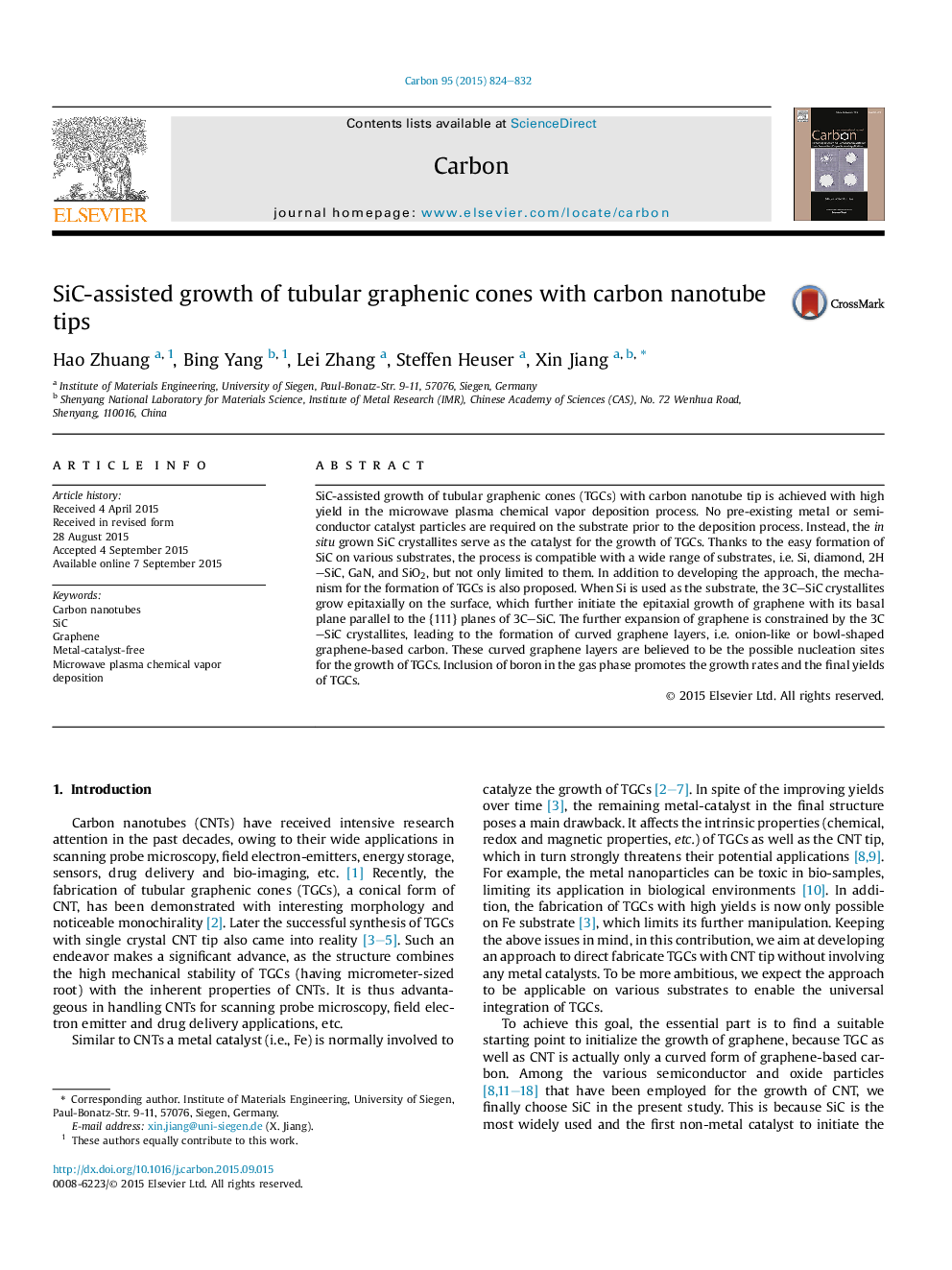| Article ID | Journal | Published Year | Pages | File Type |
|---|---|---|---|---|
| 7851545 | Carbon | 2015 | 9 Pages |
Abstract
SiC-assisted growth of tubular graphenic cones (TGCs) with carbon nanotube tip is achieved with high yield in the microwave plasma chemical vapor deposition process. No pre-existing metal or semiconductor catalyst particles are required on the substrate prior to the deposition process. Instead, the in situ grown SiC crystallites serve as the catalyst for the growth of TGCs. Thanks to the easy formation of SiC on various substrates, the process is compatible with a wide range of substrates, i.e. Si, diamond, 2H-SiC, GaN, and SiO2, but not only limited to them. In addition to developing the approach, the mechanism for the formation of TGCs is also proposed. When Si is used as the substrate, the 3C-SiC crystallites grow epitaxially on the surface, which further initiate the epitaxial growth of graphene with its basal plane parallel to the {111} planes of 3C-SiC. The further expansion of graphene is constrained by the 3C-SiC crystallites, leading to the formation of curved graphene layers, i.e. onion-like or bowl-shaped graphene-based carbon. These curved graphene layers are believed to be the possible nucleation sites for the growth of TGCs. Inclusion of boron in the gas phase promotes the growth rates and the final yields of TGCs.
Related Topics
Physical Sciences and Engineering
Energy
Energy (General)
Authors
Hao Zhuang, Bing Yang, Lei Zhang, Steffen Heuser, Xin Jiang,
